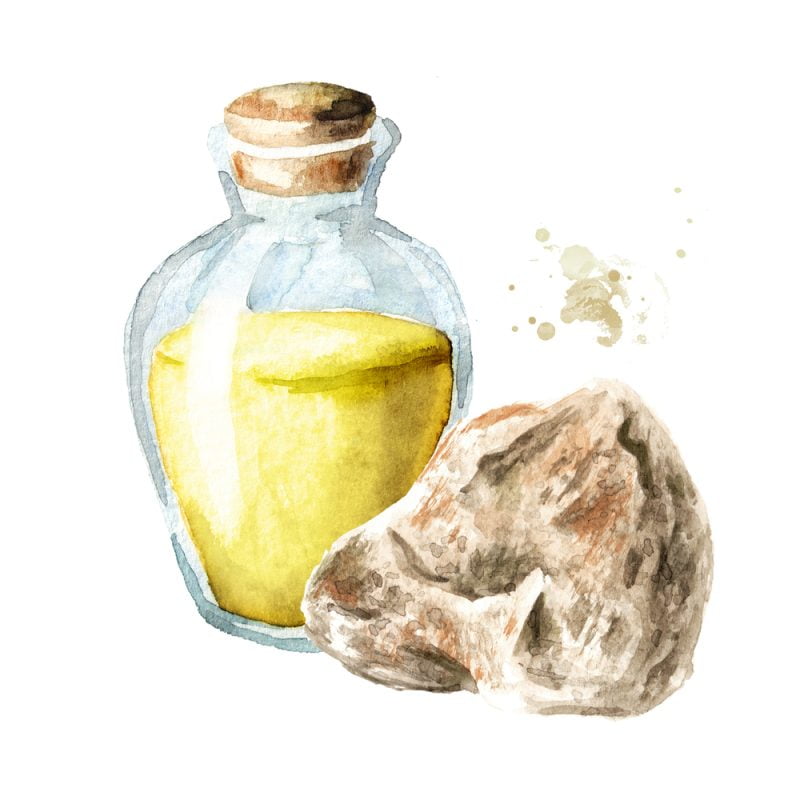Origin of scents
Amber from the depths of the sea to a perfume bottle Learn about the exciting journey of Amber
In the vast world of perfumes, some scents carry a rich history. One of these aromatic treasures is amber. Amber is one of the oldest ingredients used in perfumery, as it adds a luxurious and warm touch to the fragrance. Amber is extracted from a resinous substance secreted by whale ambergris, or it may be manufactured artificially. Amber adds leather-like and smoky notes to the fragrance, giving the fragrance a unique character and appeal.
Amber is used in a variety of perfumes with various compositions, and it can be the main ingredient in oriental perfumes that rely on warmth and depth. If you are looking for a perfume that combines elegance and warmth, perhaps perfumes that contain amber ingredients are the ideal choice for you.
Originating from the Middle East, where the art of perfumery dates back to ancient times, amber has captivated the senses of countless individuals throughout the ages. Let us embark on a journey through time and explore the captivating story of amber, from its discovery to its role in modern perfumery.
Amber Extract | The traditional journey to extract amber from whales:
It is interesting to know that amber is extracted from whales, which shows the lengths to which our ancestors went to obtain this aromatic treasure.
The process of extracting whale ambergris is a fascinating journey. It begins on the beaches, where the process involves a traditional approach in which beachgoers who scour the coast in search of ambergris search for hidden treasure that washes up on shore.
The rarity of this material makes every discovery of it like finding a hidden gem. Collectors often rely on their intuition and experience to identify these precious pieces, due to their many colors and the fact that they take many shapes.
Whales begin to secrete a waxy substance during the digestion process. Amber is found in this form, as this substance is produced in the digestive system of whales. Whales secrete the waxy substance known as amber to float on the surface of the sea. Here comes the turn of the fishermen who are searching for this precious pearl, which is highly valued for its unique aroma and proven properties.
In the past, whales were hunted and ambergris extracted from them, but this practice is no longer common due to whale conservation efforts and growing fears of their extinction. However, the historical extraction of ambergris from whales remains a fascinating part of the world’s perfume heritage.
Use of amber in perfumes and incense:
Amber’s appeal extends beyond its historical significance, finding its way into modern perfumery and traditional Middle Eastern crafts such as incense.
In perfumery, amber is often used as a base note, adding warmth, depth, and longevity to the fragrance. Its sweet, resinous scent adds a sensual quality, which has helped make it an essential ingredient in various aromatic compositions. In incense, amber is used in traditional incense preparations. The rich, comforting scent of amber is released during the slow-burning process, filling spaces with a captivating, timeless, and evocative scent.
Properties of natural amber:
Natural amber has distinctive properties that distinguish it from synthetic alternatives. Its color can vary from pale yellow to dark brown, with some rare cultivars displaying shades of green or blue. The transparency of amber is another distinctive feature, ranging from opaque to semi-transparent. When exposed to light, natural amber often reveals interesting inclusions, such as plant material or even ancient insects, providing a glimpse into the prehistoric world in which it was formed.
Smell of amber
Describing the scent of amber is a poetic endeavor. Amber exudes a warm, slightly sweet aroma with hints of vanilla, honey, and subtle earthiness. Its aromatic profile is complex and attractive, making it a versatile and beloved ingredient in the world of perfumery.
Types of amber:
Amber comes in different types, each with its unique properties. For example, white amber is considered the most valuable type of amber due to its light and delicate scent, while black amber exudes a deeper, more intense scent. The rarity and uniqueness of amber contribute to the variety of perfumes made from it, which is why amber is one of the highly sought-after aromatic ingredients by perfume makers.
Amber, with its rich past and enchanting qualities, remains a distinctive element in the world of perfumery. From its extraction along beaches to the historical practice of harvesting amber from whales, the Ambergris Journey is a tapestry of tradition, art, and natural wonders. Whether used in contemporary perfumes or other aromatic products, amber continues to cast its aromatic magic, connecting us to an aromatic heritage that dates back centuries.


